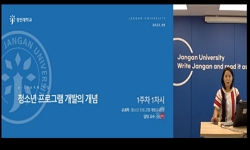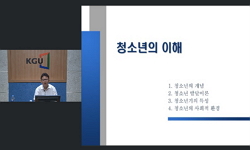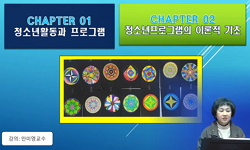본 연구의 목적은 중학생의 돈의 대한 태도는 어떠하며, 돈에 대한 태도가 사회인구학적 특성에 따라 달라지는지, 용돈실태에 따라 달라지는지를 살펴보는 것이다. 돈에 대한 태도 척도는 ...
http://chineseinput.net/에서 pinyin(병음)방식으로 중국어를 변환할 수 있습니다.
변환된 중국어를 복사하여 사용하시면 됩니다.
- 中文 을 입력하시려면 zhongwen을 입력하시고 space를누르시면됩니다.
- 北京 을 입력하시려면 beijing을 입력하시고 space를 누르시면 됩니다.
https://www.riss.kr/link?id=A100380474
- 저자
- 발행기관
- 학술지명
- 권호사항
-
발행연도
2011
-
작성언어
Korean
- 주제어
-
등재정보
KCI등재
-
자료형태
학술저널
-
수록면
21-39(19쪽)
- 제공처
-
0
상세조회 -
0
다운로드
부가정보
국문 초록 (Abstract)
본 연구의 주요 결과는 다음과 같다. 먼저 중학생의 돈에 대한 태도는 선행연구와 유사하게 5요인으로 분류되었다. 중학생의 돈에 대한 태도 문항에 대해 요인분석을 실시하고 Varimax 회전 방법을 이용하여 아이겐 value값이 1.0 이상인 요인만을 추출한 결과 5요인으로 분류되어, 요인1은 돈을 자유/힘으로 보는 태도, 요인2는 돈을 존경의 대상으로 보는 태도, 요인3은 돈을 선으로 보는 태도, 요인4는 돈을 악으로 보는 태도, 요인5는 돈을 성취의 대상으로 보는 태도로 명명하였다. 돈에 대한 태도 점수는 선-자유/힘-악-성취-존경 순으로 나타났다. 비교적 바람직한 태도를 갖고 있다고 할 수 있다. 그렇지만 전반적으로 돈에 대한 태도 점수는 낮은 편이었다. 사회인구학적 변수와 용돈실태에 따라 돈에 대한 태도를 분석한 결과 중학생들의 돈에 대한 태도는 부모의 학력, 월평균 가계소득, 월평균 용돈액, 용돈조달방법에 따라 차이가 나타났다. 이러한 특성을 고려한 돈에 대한 태도교육이 실시되거나 용돈조절을 통하여 바람직한 태도형성을 하는 것이 필요하다.
본 연구의 목적은 중학생의 돈의 대한 태도는 어떠하며, 돈에 대한 태도가 사회인구학적 특성에 따라 달라지는지, 용돈실태에 따라 달라지는지를 살펴보는 것이다. 돈에 대한 태도 척도는 국내에서 중학생을 대상으로 연구한 홍은실(2005)이 이용한 5차원의 척도를 사용하였는데, 이 척도는 Tang(1995)의 MES에서 행동적 차원을 제외한 5영역(자유/힘, 선, 성취, 존경, 악)의 21문항으로 구성되어 있다. 본 연구를 위한 설문조사는 2008년 3월 인천광역시 서구 내 중학교 4개교에 재학 중인 2학년 학생 277명을 대상으로 실시되었다. 통계프로그램으로는 SPSS 12.0 버전을 이용하였으며, Cronbach"s Alpha, 요인분석, 빈도, 평균, 교차분석(χ²), t-test, F-test, Duncan"s multiple range test, 상관관계분석을 실시하였다.
본 연구의 주요 결과는 다음과 같다. 먼저 중학생의 돈에 대한 태도는 선행연구와 유사하게 5요인으로 분류되었다. 중학생의 돈에 대한 태도 문항에 대해 요인분석을 실시하고 Varimax 회전 방법을 이용하여 아이겐 value값이 1.0 이상인 요인만을 추출한 결과 5요인으로 분류되어, 요인1은 돈을 자유/힘으로 보는 태도, 요인2는 돈을 존경의 대상으로 보는 태도, 요인3은 돈을 선으로 보는 태도, 요인4는 돈을 악으로 보는 태도, 요인5는 돈을 성취의 대상으로 보는 태도로 명명하였다. 돈에 대한 태도 점수는 선-자유/힘-악-성취-존경 순으로 나타났다. 비교적 바람직한 태도를 갖고 있다고 할 수 있다. 그렇지만 전반적으로 돈에 대한 태도 점수는 낮은 편이었다. 사회인구학적 변수와 용돈실태에 따라 돈에 대한 태도를 분석한 결과 중학생들의 돈에 대한 태도는 부모의 학력, 월평균 가계소득, 월평균 용돈액, 용돈조달방법에 따라 차이가 나타났다. 이러한 특성을 고려한 돈에 대한 태도교육이 실시되거나 용돈조절을 통하여 바람직한 태도형성을 하는 것이 필요하다.
다국어 초록 (Multilingual Abstract)
The total number of students surveyed for this study was 277. For statistical analysis, Cronbach’s Alpha, factor analysis, frequency, mean, t-test, F-test, Duncan’s multiple range test, and Pearson correlation analysis were employed using SPSS 12.0. The major results were as follows: first, money attitudes were divided into five patterns. These are named as Freedom/Power, Respect, Good, Evil, and Achievement, respectively. The attitude score was the highest for “Good”. On the other hand, the score for “Respect” was the lowest. But the money attitude scores were generally low. Secondly, it was found that the money attitudes were different according to gender, educational level of parents, household income, amount of allowance, and the source of allowance. For cultivating a positive money attitude, further efforts in education reflecting the student characteristics are needed. The management of the amount and source of allowance can be an effective method to improve the positiveness of money attitudes.
The purposes of this study were to examine the money attitudes of middle school students and to investigate if the money attitudes differ according to socio-demographic factors and their allowance management. The result can give implications for culti...
The purposes of this study were to examine the money attitudes of middle school students and to investigate if the money attitudes differ according to socio-demographic factors and their allowance management. The result can give implications for cultivating a positive money attitude.
The total number of students surveyed for this study was 277. For statistical analysis, Cronbach’s Alpha, factor analysis, frequency, mean, t-test, F-test, Duncan’s multiple range test, and Pearson correlation analysis were employed using SPSS 12.0. The major results were as follows: first, money attitudes were divided into five patterns. These are named as Freedom/Power, Respect, Good, Evil, and Achievement, respectively. The attitude score was the highest for “Good”. On the other hand, the score for “Respect” was the lowest. But the money attitude scores were generally low. Secondly, it was found that the money attitudes were different according to gender, educational level of parents, household income, amount of allowance, and the source of allowance. For cultivating a positive money attitude, further efforts in education reflecting the student characteristics are needed. The management of the amount and source of allowance can be an effective method to improve the positiveness of money attitudes.
목차 (Table of Contents)
- Ⅰ. 서론
- Ⅱ. 선행연구의 고찰
- Ⅲ. 연구방법
- Ⅳ. 연구결과
- Ⅴ. 요약 및 제언
- Ⅰ. 서론
- Ⅱ. 선행연구의 고찰
- Ⅲ. 연구방법
- Ⅳ. 연구결과
- Ⅴ. 요약 및 제언
- 참고문헌
- Abstract
동일학술지(권/호) 다른 논문
-
재무위험수용성향과 위험자산보유율 관련 변수에 관한 연구
- 한국FP학회
- 정순희(Soon Hee Joung)
- 2011
- KCI등재
-
베이비부머 가계의 재무적 특성과 연금수급액 추정에 관한 연구
- 한국FP학회
- 이지영(Ji Young Lee)
- 2011
- KCI등재
-
- 한국FP학회
- 조성민(Sung Min Cho)
- 2011
- KCI등재
-
- 한국FP학회
- 김준호(Jun Ho Kim)
- 2011
- KCI등재





 DBpia
DBpia






